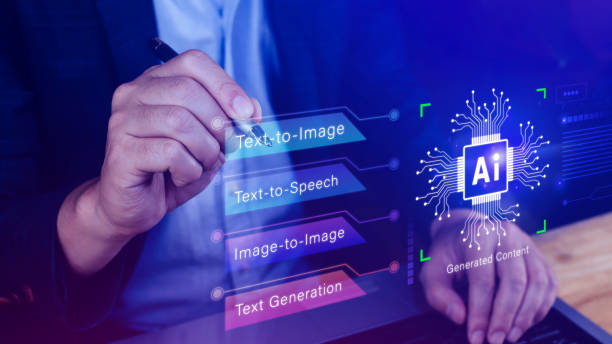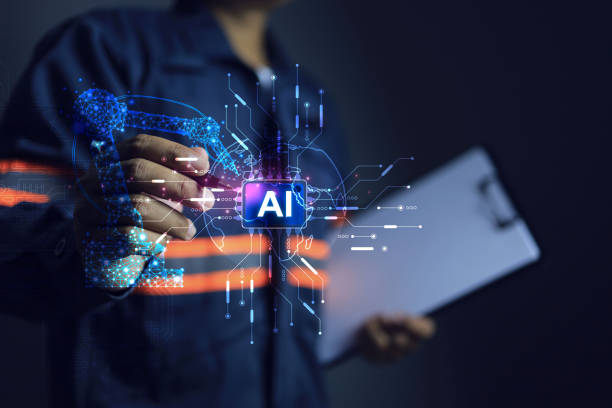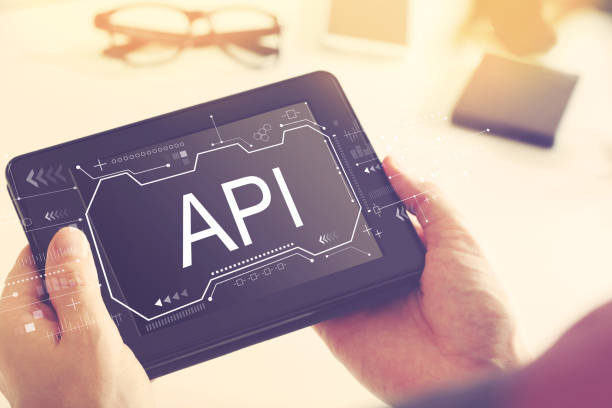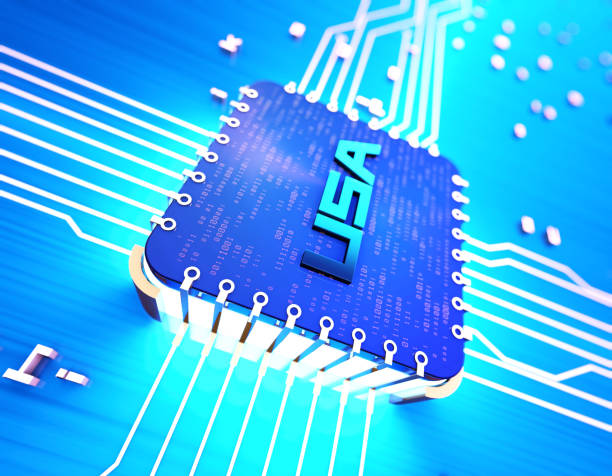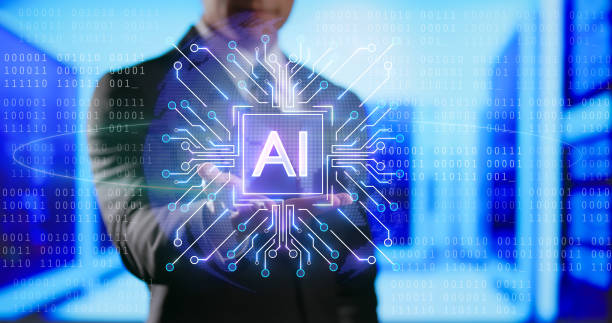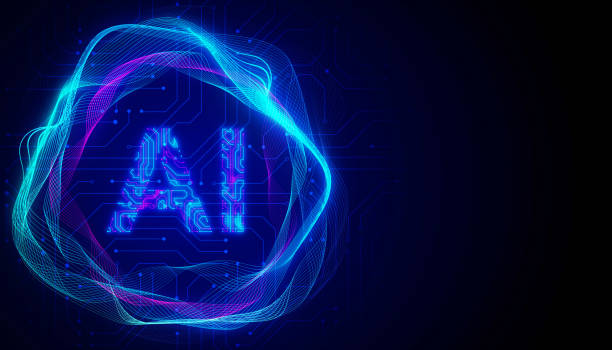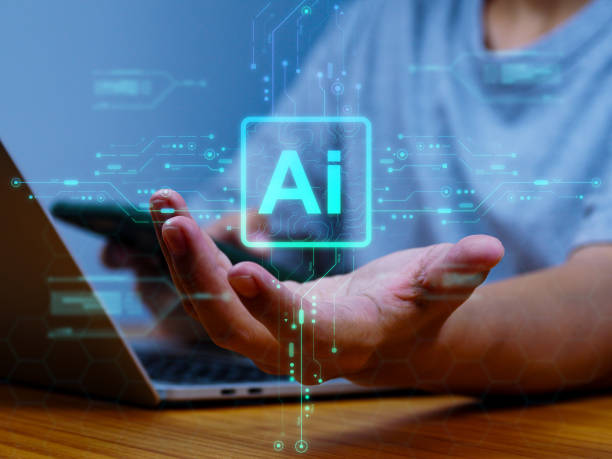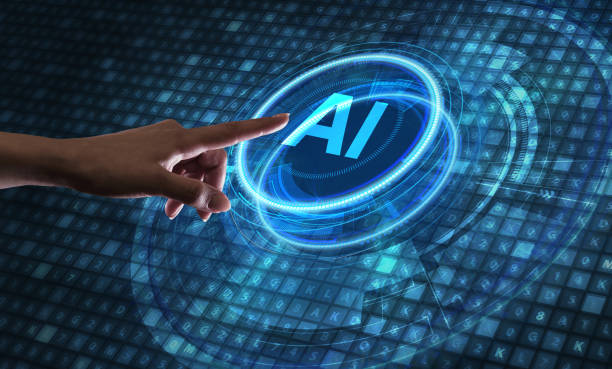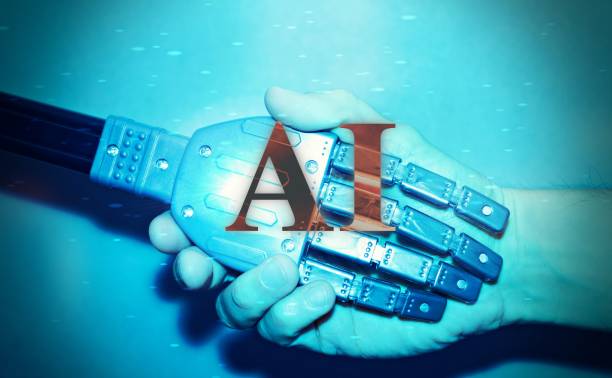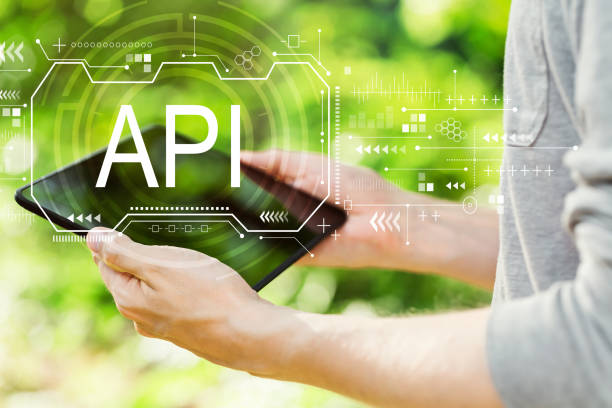Introduction to Artificial Intelligence Robots: Definition and Basic Concepts
#Artificial_Intelligence (Wikipedia) as one of the fundamental transformations of the present century, has had a profound impact on human lives.
An Artificial Intelligence Robot is essentially an intelligent agent that uses algorithms and data to perform tasks that typically require human intelligence.
These tasks include learning, reasoning, problem-solving, natural language understanding, and pattern recognition.
In simpler terms, an Artificial Intelligence Robot attempts to simulate intelligent human behaviors and assist us in various tasks.
Today, Artificial Intelligence Robots are used in various industries, including healthcare, education, manufacturing, customer service, and more.
With ever-increasing advancements in this field, it is expected that Artificial Intelligence Robots will play a more significant role in the future and dramatically change our lives.
These advancements bring both opportunities and challenges that require careful consideration and appropriate approaches.
In this article, we will comprehensively examine Artificial Intelligence Robots, their types, applications, and related challenges.
In the following sections, we will discuss the types of Artificial Intelligence Robots.
Is your company’s website as professional and trustworthy as it should be? Create an online presence that reflects your credibility and attracts more customers with a specialized corporate website design by Rasaweb.
✅ Build a powerful and professional image of your brand
✅ Turn visitors into real customers
⚡ Get a free consultation now!
Types of Artificial Intelligence Robots Based on Capabilities and Applications
Artificial Intelligence Robots can be categorized based on their capabilities and applications.
A common classification divides them into three main categories: Weak AI (Narrow AI), Strong AI (General AI), and Super AI.
Weak Artificial Intelligence Robots are designed to perform specific tasks and are specialized in that area, such as voice assistants (Amazon Alexa) or facial recognition systems.
Strong Artificial Intelligence Robots are capable of understanding, learning, and performing any task that a human can, but they have not yet been fully developed.
Super AI surpasses human intelligence and can solve problems that humans are unable to solve.
Additionally, Artificial Intelligence Robots can also be categorized based on their learning methods, such as machine learning, deep learning, and reinforcement learning.
Each of these methods employs different approaches to training Artificial Intelligence Robots and are suitable for specific applications.
Today, we are witnessing the widespread use of various types of Artificial Intelligence Robots in various industries.
Click here to preview your posts with PRO themes ››
Extensive Applications of Artificial Intelligence Robots in Various Industries
Artificial Intelligence Robots play a very important role in various industries.
In healthcare, Artificial Intelligence Robots are used to diagnose diseases, provide personalized treatments, and assist surgeons in performing complex operations.
In the manufacturing industry, they are used for automating processes, quality control, and predicting equipment failures.
In the customer service sector, Artificial Intelligence Robots are used as chatbots to answer customer questions and provide 24-hour support.
In education, Artificial Intelligence Robots can act as private tutors and providers of personalized educational content.
Also, in the financial and banking sector, they are used for fraud detection, risk management, and providing financial advice.
These are just a few examples of the extensive applications of Artificial Intelligence Robots in various industries.
With the increasing advances in this field, it is expected that Artificial Intelligence Robots will play a more important role in the future and dramatically change our lives.
| Industry | Application |
|---|---|
| Healthcare | Disease diagnosis, personalized treatment |
| Manufacturing | Automation, quality control |
| Customer Service | 24/7 support, Chatbots |
| Education | Private tutor, personalized content |
| Finance and Banking | Fraud detection, risk management |
With the increasing advances in this field, it is expected that Artificial Intelligence Robots will play a more important role in the future and dramatically change our lives.
Advantages and Disadvantages of Using Artificial Intelligence Robots
The use of Artificial Intelligence Robots has several advantages and disadvantages.
Advantages include increased efficiency, reduced costs, high accuracy, and the ability to perform dangerous tasks.
Artificial Intelligence Robots can work around the clock without fatigue, reduce human errors, and be used in dangerous environments in place of humans.
However, the use of Artificial Intelligence Robots also has disadvantages, including the high cost of implementation, concerns about job losses, ethical and legal issues, and the possibility of errors due to defects in algorithms or data.
Also, over-reliance on Artificial Intelligence Robots can lead to a reduction in human skills and increased vulnerability to cyberattacks.
To benefit from the advantages of Artificial Intelligence Robots and reduce their disadvantages, it is necessary to adopt a balanced and responsible approach and pay special attention to the ethical and social issues related to them.
Does your current website turn visitors into customers or scare them away? Solve this problem forever with professional corporate website design by Rasaweb!
✅ Create a powerful brand and build trust.
✅ Attract target customers and increase sales.
⚡ Get a free consultation now!
Ethical and Social Challenges of Artificial Intelligence Robots
The development and use of Artificial Intelligence Robots pose several ethical and social challenges.
One of the most important of these challenges is the issue of discrimination and inequality.
If the data used to train Artificial Intelligence Robots contains biases and prejudices, the Artificial Intelligence Robots will learn these biases and apply them in their decision-making.
This can lead to social inequalities and discrimination against certain groups in society.
Another challenge is the issue of privacy and data security.
Artificial Intelligence Robots need a large amount of data to perform their tasks, which may include personal and sensitive information about individuals.
Protecting this data and preventing its misuse is a very important challenge.
Also, the issue of accountability for the decisions of Artificial Intelligence Robots is a serious challenge.
If an Artificial Intelligence Robot makes a wrong decision and causes damage, who will be responsible? These questions require careful consideration and the development of appropriate laws and regulations.
The Future of Artificial Intelligence Robots: Trends and Predictions
The future of Artificial Intelligence Robots is very bright and full of potential.
With the increasing advances in the fields of machine learning, deep learning, and natural language processing, Artificial Intelligence Robots are becoming more capable and intelligent every day.
It is expected that in the future, Artificial Intelligence Robots will play a very important role in our lives and will be used in various fields, including healthcare, education, manufacturing, transportation, and more.
Some of the important trends in the field of Artificial Intelligence Robots include the development of reliable and responsible Artificial Intelligence Robots, the integration of Artificial Intelligence Robots with the Internet of Things (Wikipedia), and the creation of self-learning Artificial Intelligence Robots.
However, to realize this potential, it is necessary that the ethical and social challenges related to Artificial Intelligence Robots be seriously considered and that responsible and sustainable approaches to their development and use be adopted.
Introduction to Tools and Platforms for Developing Artificial Intelligence Robots
There are various tools and platforms for developing Artificial Intelligence Robots, each with its own features and capabilities.
Some of the most popular of these tools and platforms include TensorFlow, PyTorch, Keras, scikit-learn, and Microsoft Azure Machine Learning.
TensorFlow is an open-source software library developed by Google and used for building and training machine learning models.
PyTorch is also another open-source library that is widely used in Artificial Intelligence Robot research.
Keras is a high-level application programming interface that helps developers easily build and train deep learning models.
scikit-learn is a comprehensive library for machine learning in Python that includes various algorithms for classification, regression, clustering, etc.
Microsoft Azure Machine Learning is a cloud platform that allows developers to build, train, and deploy machine learning models on a large scale.
The choice of the right tool and platform depends on the needs and requirements of the project.
| Tool or Platform | Description | Programming Language |
|---|---|---|
| TensorFlow | Google Open Source Library | Python, C++ |
| PyTorch | Open Source Research Library | Python |
| Keras | High-Level Programming Interface | Python |
| scikit-learn | Comprehensive Machine Learning Library | Python |
| Microsoft Azure Machine Learning | Cloud Machine Learning Platform | Python, R |
Key Points in Designing and Implementing Artificial Intelligence Robots
Designing and implementing Artificial Intelligence Robots requires attention to several key points.
The first point is to accurately define the problem and determine the goals.
Before starting to develop an Artificial Intelligence Robot, it should be clearly specified what the purpose of building it is and what problems it is intended to solve.
The second point is to select suitable and high-quality data.
Data plays a very important role in the performance of Artificial Intelligence Robots, and if the data is incomplete, incorrect, or biased, the Artificial Intelligence Robot will also perform poorly.
The third point is to choose the appropriate algorithm.
There are different algorithms for machine learning, and the choice of the appropriate algorithm depends on the type of problem and data.
The fourth point is the continuous evaluation and improvement of the Artificial Intelligence Robot.
After implementing the Artificial Intelligence Robot, its performance should be continuously evaluated and, if necessary, the algorithms, data, or other parameters should be improved.
By observing these key points, successful and efficient Artificial Intelligence Robots can be designed and implemented.
Don’t have a corporate website yet and are missing out on online opportunities? With professional corporate website design by Rasaweb,
✅ Double the credibility of your business
✅ Attract new customers
⚡ Free consultation for your corporate website!
Case Study of Successful Artificial Intelligence Robot Projects
Reviewing successful Artificial Intelligence Robot projects can be inspiring and informative.
One of these projects is Facebook’s DeepFace facial recognition system, which can accurately recognize people’s faces in images.
Another project is Google’s AlphaGo system, which was able to defeat the world champion in the game of Go.
This project demonstrated that Artificial Intelligence Robots can also achieve a high level of performance in complex and strategic games.
The third project is IBM’s Watson system, which is used in healthcare to diagnose diseases and provide personalized treatments.
This project showed that Artificial Intelligence Robots can also help humans in specialized and complex fields.
These projects are examples of successful applications of Artificial Intelligence Robots in various industries and show that Artificial Intelligence Robots have a very high potential to solve problems and improve human lives.
Final Points and Recommendations for Optimal Use of Artificial Intelligence Robots
In conclusion, here are a few points and recommendations for optimal use of Artificial Intelligence Robots.
Firstly, before implementing an Artificial Intelligence Robot, accurately identify your needs and goals and make sure that the Artificial Intelligence Robot is the best solution for your problem.
Secondly, provide high-quality and diverse data to train the Artificial Intelligence Robot and continuously evaluate and improve its performance.
Thirdly, pay special attention to the ethical and social issues related to Artificial Intelligence Robots and prevent discrimination and inequality in the decision-making of Artificial Intelligence Robots.
Fourthly, seek help from Artificial Intelligence Robot experts and consultants and improve your knowledge and skills in this field.
By observing these points, you can fully benefit from the advantages of Artificial Intelligence Robots and avoid their disadvantages.
Finally, remember that Artificial Intelligence Robots are powerful tools that can improve our lives, but their responsible and conscious use is essential.
Frequently Asked Questions
| Question | Answer |
|---|---|
| What is an Artificial Intelligence Robot? | It is a robot that uses artificial intelligence capabilities to understand the environment, reason, learn, and make decisions to perform complex tasks independently. |
| What is the main difference between a regular robot and an Artificial Intelligence Robot? | Artificial Intelligence Robots can learn and adapt to their environment, while regular robots typically operate based on fixed and predetermined programs. |
| In what areas are Artificial Intelligence Robots used? | In areas such as industry (production lines), medicine (robotic surgeries), services (customer support, smart vacuum cleaners), exploration (space and underwater), and entertainment. |
| How do Artificial Intelligence Robots learn? | They gain new skills through machine learning (Machine Learning) and deep learning (Deep Learning) algorithms, by analyzing large amounts of data and identifying patterns. |
| Can Artificial Intelligence Robots have emotions? | Currently, no. They can identify or simulate emotions, but they do not have the real experience of emotions like humans. |
| What are the most important advantages of using Artificial Intelligence Robots? | Increased productivity, reduced human error, performing dangerous or repetitive tasks, and providing innovative and efficient services. |
| What are the challenges in developing Artificial Intelligence Robots? | The need for large amounts of high-quality data, the complexity of algorithms, ethical issues, cybersecurity, and the high cost of research and development. |
| Are Artificial Intelligence Robots dangerous to humans? | No, if safe design principles and ethical regulations are followed. Concerns are more related to social and economic impacts such as changes in the labor market. |
| What is an example of an Artificial Intelligence Robot in everyday life? | Smart vacuum cleaner robots (such as Roomba) that automatically map and clean the house, or smart voice assistants (such as Siri and Alexa). |
| How is the future of Artificial Intelligence Robots predicted? | They are expected to become smarter, more autonomous, and able to interact more complexly with humans, and to play a more prominent role in industry, medicine, transportation, and everyday life. |
And other services of Rasa Web Advertising Agency in the field of advertising
Smart Google Ads: A combination of creativity and technology to increase sales through dedicated programming.
Smart Direct Marketing: An effective tool for attracting customers by designing an attractive user interface.
Smart Social Media: A dedicated service for increasing sales growth based on precise audience targeting.
Smart Sales Automation: An innovative platform for improving click-through rates by optimizing key pages.
Smart Reportage: A professional solution for increasing sales by focusing on precise audience targeting.
And more than a hundred other services in the field of internet advertising, advertising consulting, and organizational solutions
Internet Advertising | Advertising Strategy | Ad Reportage
Resources
Artificial Intelligence vs. Automation: Which is Better for Your Business?
,Smart Robot; Are We Destroying Common Sense?
,The Bright Future of Artificial Intelligence Robots in Industry
,The Impact of Smart Robots on Other Jobs is a Professional Growth
? Are you ready to take your business to the top in the digital world? Rasaweb Digital Marketing Agency, with years of experience and a specialized team, offers comprehensive and result-oriented solutions for the growth and visibility of your brand. From responsive website design and SEO to social media management and targeted advertising campaigns, we are by your side every step of the way to turn your digital dreams into reality. With Rasaweb Afarin, the bright future of your business begins today.
📍 Tehran, Mirdamad Street, next to the Central Bank, South Kazerun Alley, Ramin Alley No. 6
“`


